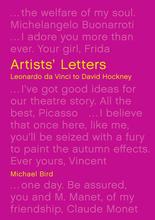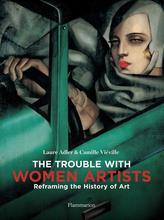More about Joan Mitchell
- All
- Info
- Shop
Works by Joan Mitchell

Contributor
Joan Mitchell was one of very few female abstract expressionists (she sometimes distinguished herself as a “lady painter”), but she ran with the best of them in New York.
Her gang included Franz Kline, Willem de Kooning, Philip Guston, and other fellas who were known as “The Club”. They could often be found lurking around at Greenwich Village’s Cedar Tavern, a notorious hangout for beatniks and painters.
Mitchell came from a wealthy Chicago family, so she never struggled much as a “starving artist.” That’s not to diminish her talent, though. Allegedly, she was both far sighted (explains all the blobs?) and also had synesthesia, a sensory condition that results in powerful associations between colors, sounds, and other stimuli. Some people might experience such things as quirky nuisances, but these could be amazing superpowers for an abstract painter!
In 1959 she moved from NYC to France with her lover, French Canadian painter/race car driver (swoon) Jean-Paul Riopelle. The famously cranky art critic Clement Greenberg warned her not to go, but she did it anyway, and she and Jean-Paul proceeded to have a real bad romance for about a quarter of a century. In the end, he left her for another woman and then she made angry paintings about it. When she died, he made sad paintings about it.
Her contributions to Modern art are important, which is maybe why she got away with being not the nicest person and also kind of a drunk. Acquaintances and scholars have described her as rude, belligerent, brusque, and lonely, too. You gotta wonder if she’d be talked about differently were she a man. But she had a soft side, too. She regularly hosted emerging artists at her home near Giverny, and said sensitive things like, “‘Sunflowers are something I feel very intensely. They look so wonderful when young and they are so moving when they are dying…”
Oh, and, no relation to Joni Mitchell.
Sources
- Albers, Patricia. “Joan Mitchell: Painting as Cathedral.” Synesthesia: Art and the Mind. 2008. Accessed July 21, 2017. http://www.patriciaalbers.net/writings
- “Joan Mitchell: The Last Paintings.” Hauser & Wirth. Accessed 7/28/17. https://www.hauserwirth.com/exhibitions/1223/joan-mitchell-the-last-pai…
- “Joan Mitchell,” Cheim and Read. Accessed July 21, 2017. http://www.cheimread.com/artists/joan-mitchell
- “Joan Mitchell.” Joan Mitchell Foundation. Accessed July 21, 2017. http://joanmitchellfoundation.org/work
- Perrault, John. “The Six Sins of Joan Mitchell.” Artopia. August 19, 2014. Accessed July 21, 2017. http://www.artsjournal.com/artopia/2014/08/the-six-sins-of-joan-mitchel…
- “Riopelle, jean-paul.” Galerie d’Art Chateau Frontenac. Accessed July 21, 2017. http://galeriechateaufrontenac.com/en/artistesgcf/riopelle-jean-paul/
- Schjeldahl, Peter. “Tough Love. Resurrecting Joan Mitchell.” The New Yorker. July 15, 2002. Accessed July 21, 2017. http://www.newyorker.com/magazine/2002/07/15/tough-love-3
Featured Content
Here is what Wikipedia says about Joan Mitchell
Joan Mitchell (February 12, 1925 – October 30, 1992) was an American artist who worked primarily in painting and printmaking, and also used pastel and made other works on paper. She was an active participant in the New York School of artists in the 1950s. A native of Chicago, she is associated with the American abstract expressionist movement, even though she lived in France for much of her career.
Mitchell's emotionally intense style and its gestural brushwork were influenced by nineteenth-century post-impressionist painters, particularly Henri Matisse. Memories of landscapes inspired her compositions; she famously told art critic Irving Sandler, "I carry my landscapes around with me." Her later work was informed and constrained by her declining health.
Mitchell was one of her era's few female painters to gain critical and public acclaim. Her paintings, drawings, and editioned prints can be seen in major museums and collections around the world, and have sold for record-breaking prices. In 2021, the San Francisco Museum of Modern Art and Baltimore Museum of Art co-organized a comprehensive retrospective of her work. The Fondation Louis Vuitton presented an exhibition of the work of Mitchell and Claude Monet from October 2022 to February 2023.
In her will, Mitchell provided for the creation of the Joan Mitchell Foundation, a non-profit corporation that awards grants and fellowships to working artists and maintains her archives.
Check out the full Wikipedia article about Joan Mitchell


















